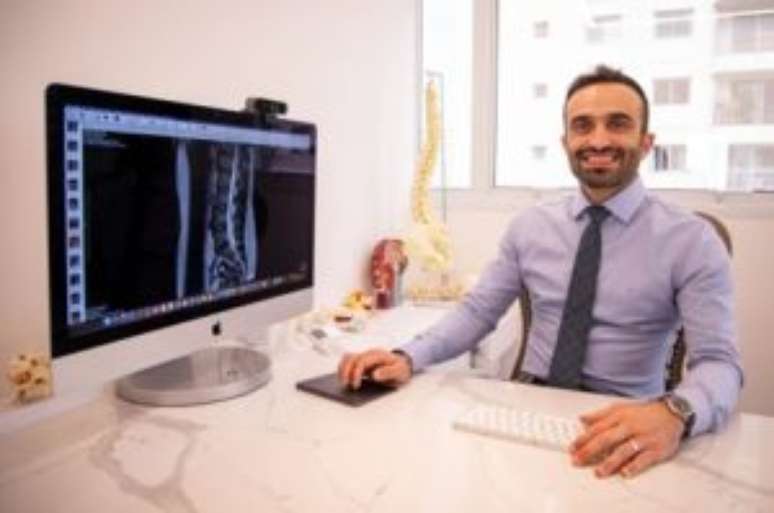The World Health Organization (WHO) says the problem affects 80% of the population
What do singer Anitta and actress Vitória Strada have in common? Both were diagnosed with herniated discs. The pathology is caused by natural wear and tear associated with aging. Over time, intervertebral discs, gelatinous structures located between the vertebrae of the spine, can lose elasticity and resistance. The process is known as disc degeneration. Other factors can contribute to the problem, such as spinal injuries, trauma, and repetitive activities that place excessive pressure on the spine. Furthermore, inadequate posture, incorrect weight lifting and a sedentary lifestyle are examples of behaviors that can increase the risk of this pathology.
Neurosurgeon Rodolfo Carneiro (CRM-SP 141.661 and RQE 50.652) explains that a herniated disc compresses the nerve, causing inflammation or compression. A worn disc leads to an inflammatory process or even a gap between the vertebrae, which can cause mechanical low back pain. Therefore, from the moment the person moves, the pain manifests itself mainly in the lower back. When the nerve is compressed, this pain radiates to the leg or arm, if it is cervical. More rarely, thoracic hernias radiate to the chest, on one side or the other, or both. “Because the hernia compresses the nerve or spinal cord, weakness can occur. It’s as if the wiring that will direct the muscle’s movement is cut or disrupted,” he points out.
Symptoms
According to the Ministry of Health, a herniated disc can have no symptoms or cause mild, moderate or severe, disabling pain. The symptoms are different and are associated with the area where the nerve root has been compressed. The most common are tingling with or without pain, pain in the spine and leg (and/or thigh), only in the leg or thigh, spine and arm, only in the arm.
Treatments
According to the neurosurgeon, most treatments for herniated disc are conservative, that is, they do not require surgery. He points out that postural and ergonomic changes at work, regular physical activity, changing eating habits, physiotherapy, acupuncture and medications can improve 90% of patients. However, there are individuals who are unable to take these measures and need to undergo some type of surgery.
Dr. Rodolfo Carneiro – Photographic advertising
According to the specialist, emergency surgery occurs when, for example, there is compression in the cervical cord, which causes weakness in the arms and legs. In the lower back, if patients have what’s called cauda equina syndrome — compression severe enough to block multiple nerves in that region — it can lead to leg weakness, tingling, numbness, numbness or tingling in the perineal region , difficulty controlling urine and bowel movements. Rodolfo, however, underlines that these are more dramatic, rare cases and require rapid surgery in less than 24 hours.
Source: Terra
Rose James is a Gossipify movie and series reviewer known for her in-depth analysis and unique perspective on the latest releases. With a background in film studies, she provides engaging and informative reviews, and keeps readers up to date with industry trends and emerging talents.







